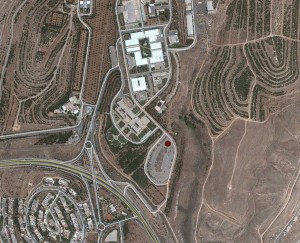Since Israel’s brazen airstrike on Syrian territory Jan. 30, Israel’s enemies have yet to retaliate. Syria, Iran, and their proxy, Hezbollah, together comprise the region’s heavily-armed fighting force, and yet remain unwilling to make good on pledges to respond with aggression to any Israeli force.
Even Syria’s enemies have begun to take notice of the nonresponse, exploiting the Assad regime’s inaction for their own propaganda purposes. In Turkey, where relations with Israel are seriously strained, President Ahmet Davutoglu asked: “Why didn’t [Syrian President Bashar] al-Assad even throw a pebble when Israeli jets were flying over his palace and playing with the dignity of his country?”

Depending on whom you ask, Israel either hit sophisticated anti-aircraft missiles in Syria that were en-route to the Lebanese border and Hezbollah (this is the US and Israeli explanation), or it hit a symbolic military research center northwest of Damascus (the Syrian version). But at this point, speculation over which targets were hit, where they were located, or what exact purpose they served is irrelevant.
What is relevant, is that Israel clearly retains the strategic high ground against its enemies, with full knowledge that Syria, Iran, and Hezbollah are bogged down in the swamp of civil war, economic sanctions, or diplomatic isolation.
The Israeli strike against Syria has to be looked at in the context of last November’s conflict between Hamas and Israel – when Hamas fired some 1,500 rockets from the Gaza Strip, including longer range Iranian-made missiles that reached Tel Aviv for the first time. Israel successfully protected itself with its anti-missile system, called Iron Dome. The Syria strike shows that the last round in the Gaza Strip emboldened the Israeli military to go after Hezbollah, a far more fearsome enemy.
Knowing that its Iron Dome system was battle tested, Israel was able to confidently deploy the anti-missile system near Israel’s strategic industrial centers in Haifa prior to the attacks on Syria. Tanks and troops had been moved to the border with Syria, backed by a political establishment that had spent months coordinating with regional and international allies through back channels to gain support for such action.
The Israeli home front meanwhile, had undergone months of emergency drills, siren tests, and disaster planning, all based on pitfalls from the 2006 Second Lebanon War and the 2008-9 Gaza conflict.
Not only does Israel know its own strength, it is well aware of its enemies’ weakness. For Hezbollah, times have changed since its glory days in the 2006 Lebanon war. Hezbollah’s leadership knows that a broad conflict with Israel would exact damage on an exponentially higher level than seven years ago, affecting all of Lebanon. Only this time, an increasingly sanctions-hit Iran would be unable to rebuild Lebanon’s infrastructure. And the embattled Assad regime is likely too busy to facilitate the massive smuggling effort that would be needed to restore Hezbollah’s vast arsenal of rockets and missiles.
Both Hezbollah and Israel understand that the Shiite group’s arsenal is its last card in maintaining its future political strength in Lebanon after the eventual fall of its dictatorial uncle, President Assad, next door. That card should not be played unless absolutely necessary.
The Assad regime meanwhile, knows full well that entering into a conflict with Israel would expedite its ousting. For years, the Israeli Air Force has trained for a conflict with Syria, particularly for a lightning campaign to destroy Assad’s air force, long-range artillery, and chemical weapons if needed. Coincidentally, these weapons and units are all that stand in the way of a Syrian rebel military victory against an Army whose ground troops face increasingly severe manpower shortages.
On Feb. 5, Israel bolstered its anti-missile capabilities near the Lebanese border, adding another Iron Dome and Patriot missile battery to its array defenses. Israeli aircraft are patrolling the skies over the Syrian-Lebanese border, scanning and hunting for any signs that Hezbollah may once again be attempting to transfer game-changing weapons into its arsenals. There should be little doubt in anyone’s mind that those pilots are primed to strike Israel’s enemies again and again.
Contrary to their statements, Iran and Syria do not have the ability to respond to Israel’s efforts to curb weapons smuggling to Hezbollah. Apart from dispatching their operatives to bomb a synagogue in Eastern Europe or target an Israeli diplomat in West Africa, there is little Hezbollah, the Assad regime, or Iran can do to retaliate against Israel for its very public power play.
This article was originally published in the Christian Science Monitor.